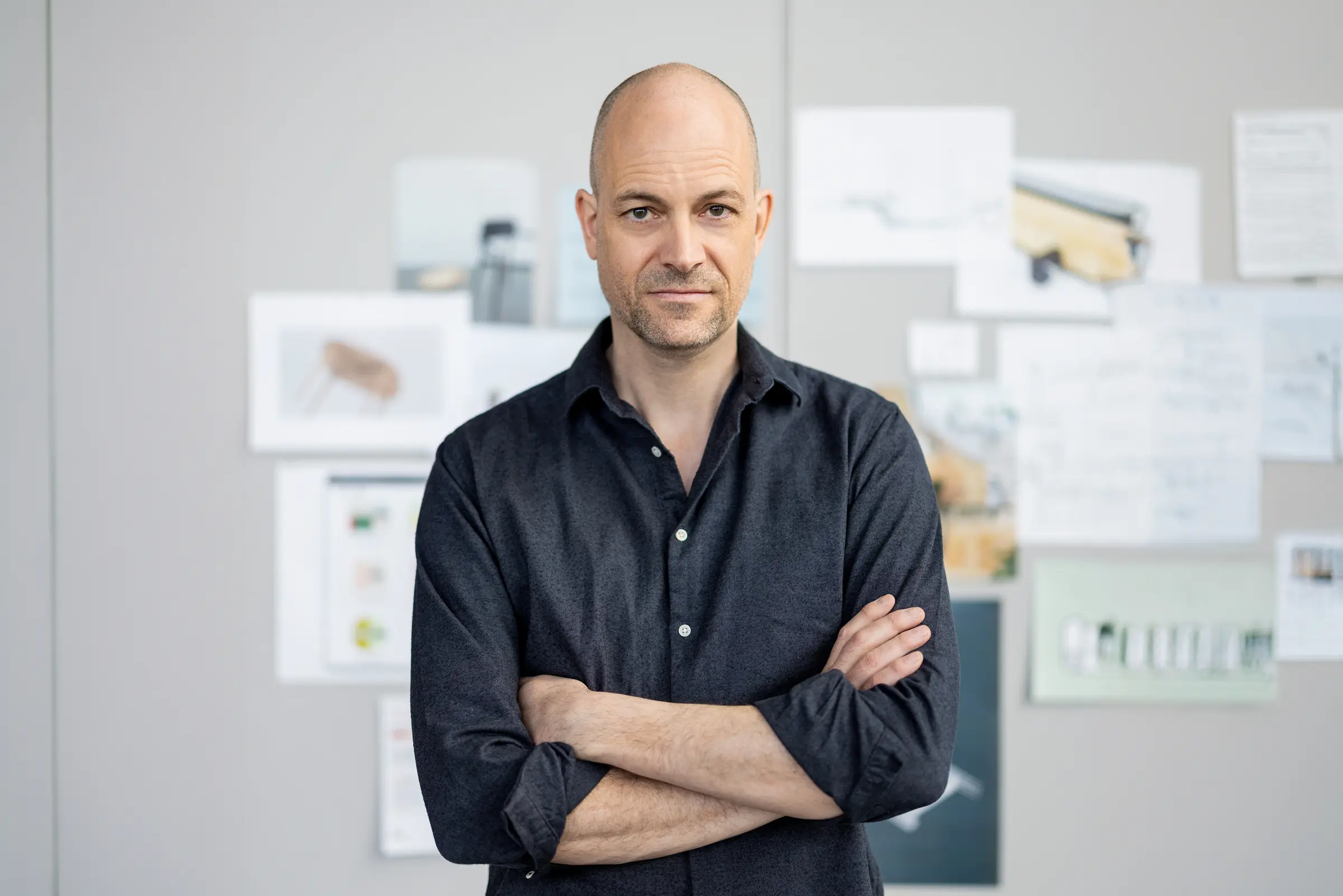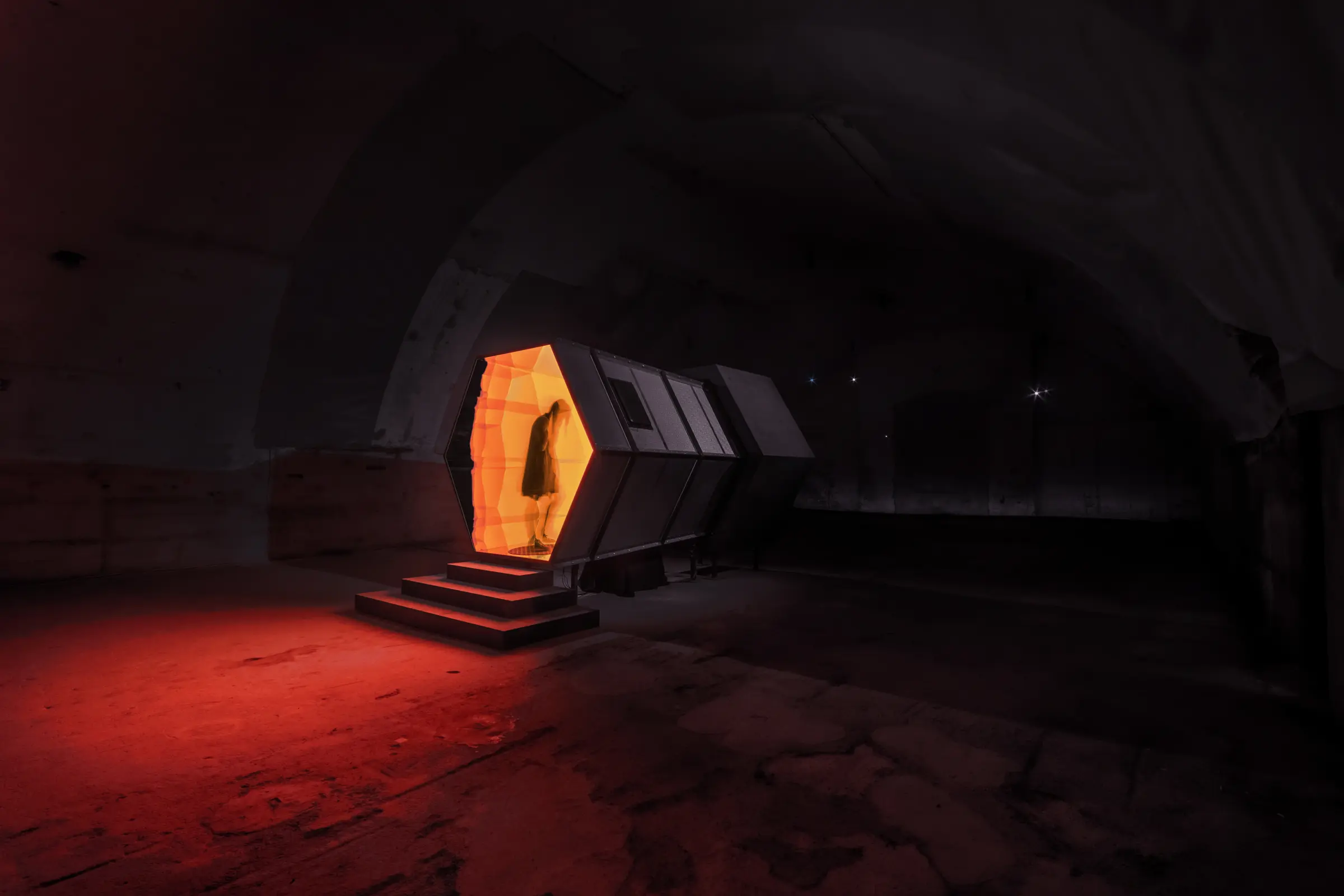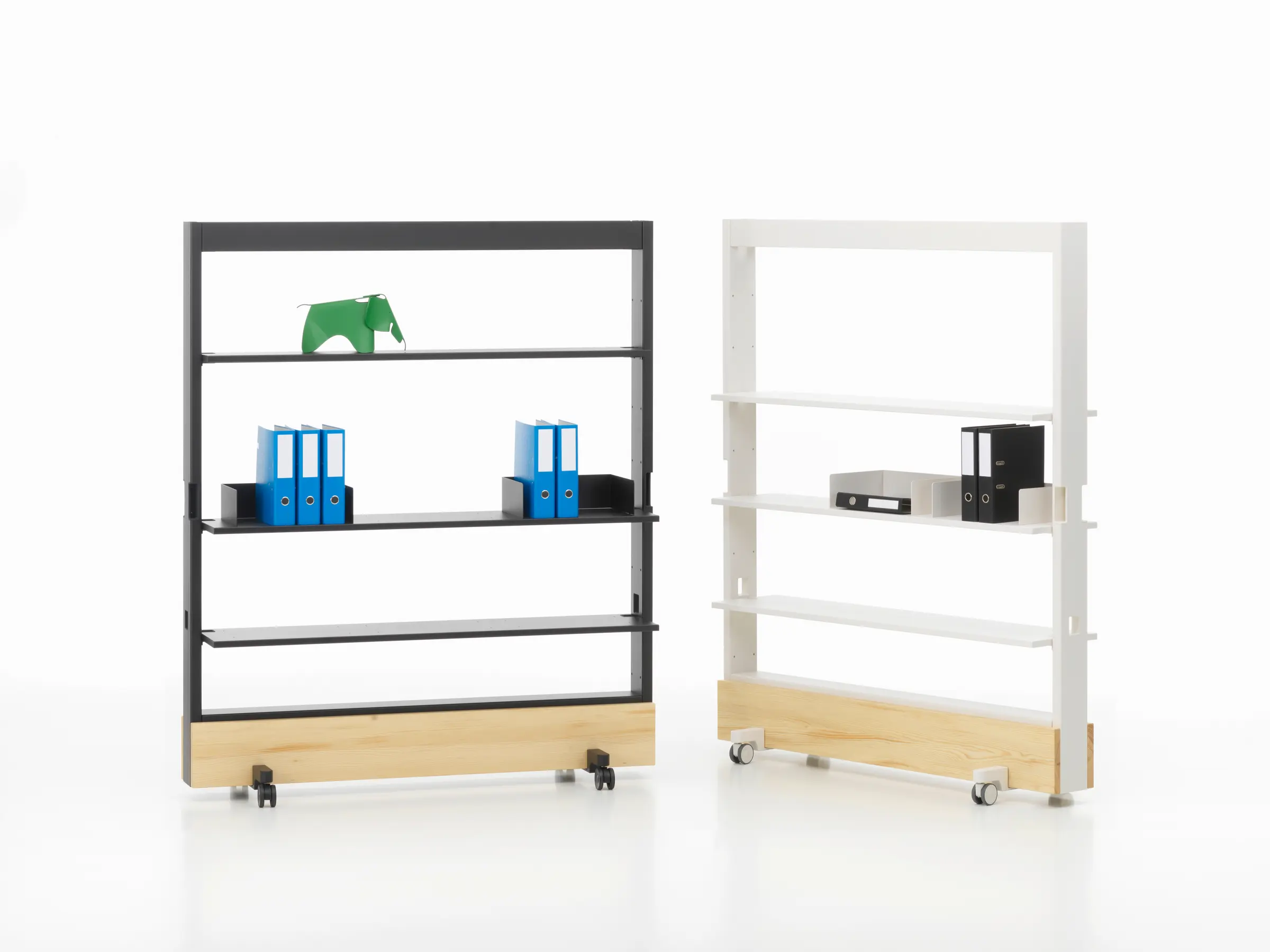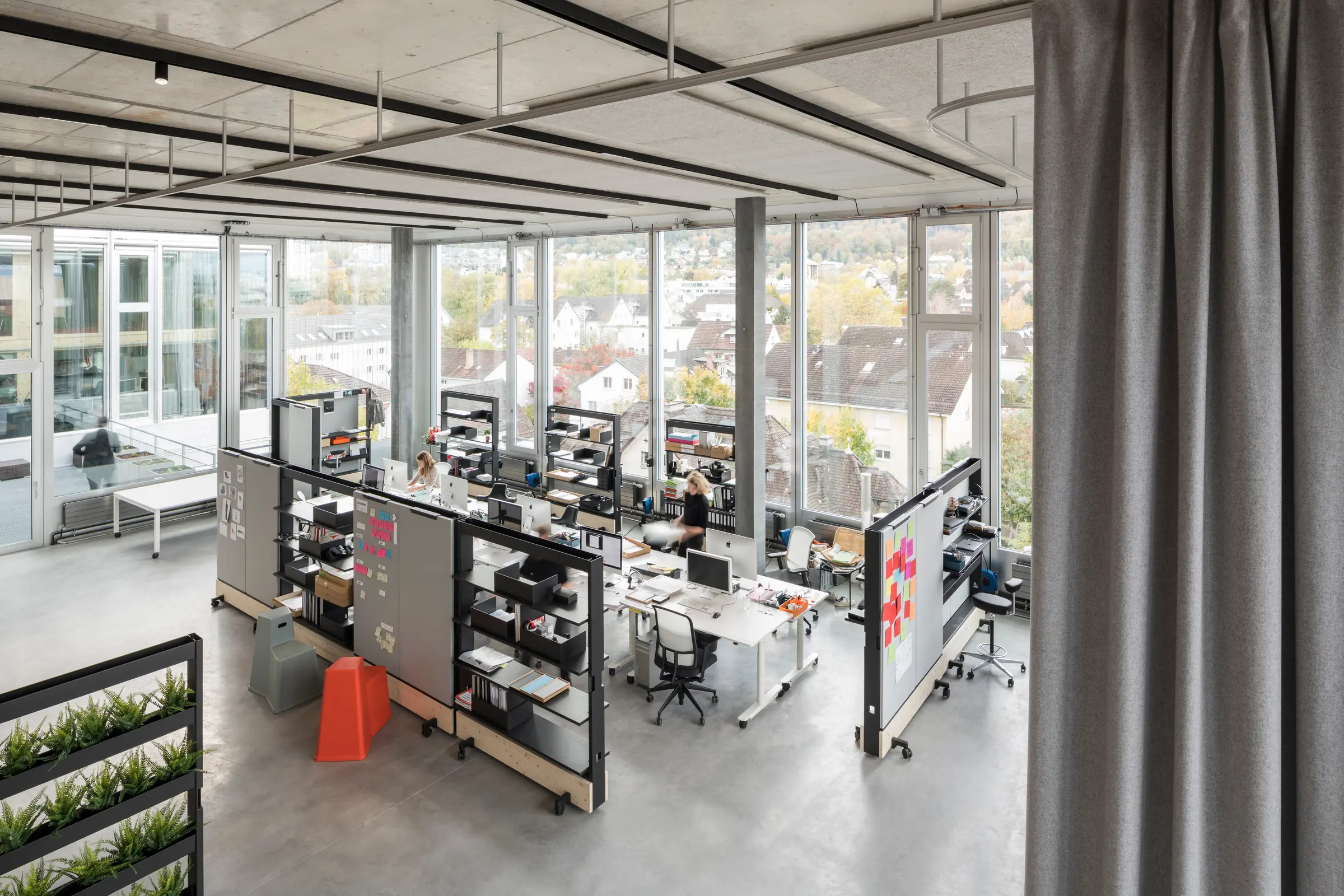October 2025
Story
Beyond the Sky

ETH architect and designer Stephan Hürlemann has achieved a great deal in his career to date. Major architectural projects, design drafts for renowned companies such as Vitra or de Sede, installations such as "Piece of Sky" for Sky-Frame. Now, in a time of great crisis, Stephan Hürlemann wants to achieve more. He is now working in various collaborations on different projects close to his heart. We meet him in his studio in Zurich-Albisrieden.

Stephan, what is your connection to Sky-Frame?
I first developed an installation for Sky-Frame in 2010 as part of the "Designer Saturday" exhibition event. Since then, we have realised a number of projects together. These include an exhibition and POS concept, which has been in place since 2018, the design of Sky-Frame's own workspaces and the installation "A Piece of Sky".

Your projects involve many different disciplines that go far beyond architecture. What is the focus of your work?
In view of global developments, the focus of my work has changed significantly in recent years. It is essential that we all take action within our individual capabilities to create a more sustainable world. For this reason, I have decided to no longer take on particularly time-consuming projects that do not have a direct positive impact. This allows me to concentrate specifically on projects that are relevant to me. I continue to develop products and spaces. However, these should be designed for much longer and more efficient use, conserve resources and avoid waste and emissions. I have also co-founded a company that uses digital tools to provide a kind of operating system for the circular economy for manufacturers of furniture and products.
"It is essential that we all take action within our individual capabilities to create a more sustainable world."
You are originally a classical architect and designer. How do you see yourself today?
I use my way of thinking to design better environments that sustainably enrich our everyday lives. This could be a piece of furniture, a room, a utilisation concept for a building or a new business model or an innovative app. To drive the transformation forward, we need to keep an open mind, try out new things and rethink things. Including ourselves. It's easy to see problems - the trick is to recognise opportunities.

You have specialised in dynamic working environments. How did that come about?
In 2016, we were working on office planning for a very progressive company. The questions we had to answer back then proved to be extremely relevant in the years that followed. Topics such as dynamic working, the paperless office, alternative work locations and hybrid meetings led to a completely new, changeable work concept in this project. I called this concept the "Dancing Office", with the main protagonist of the system being the "Dancing Wall". I was able to industrialise this in collaboration with Vitra and bring it to market as a product in 2018. Shortly afterwards, developments in the field of workspace design were massively accelerated by the pandemic. All companies were forced to become more dynamic. Video conferencing became the norm and hybrid working took off. The "Dancing Office" concept was ready just in time to provide an answer to the new needs. However, it is not my intention to specialise in a single topic. Rather, I am driven by my curiosity - and by my urge to solve problems.

What do you think about the future of technologies such as VR and their impact on society?
Technological developments have always led to sudden social changes. In my opinion, there are currently several areas with such potential. These include blockchain technology, artificial intelligence and augmented realities such as the metaverse, to name just the most prominent. AI in particular is likely to bring about a dramatic change in the way we work, communicate, design, write and create in the future. The big challenge will be to utilise these technologies positively and get a grip on their negative aspects.
"Personally, I don't believe that the real world will be replaced by the virtual world. Rather, we will expand our realities."
Is there a danger that virtual worlds will replace the real world?
Of course there are dystopian visions. However, I personally don't believe that the real world will be replaced by the virtual world. Rather, we will expand our realities. Work meetings, training programmes and leisure activities will partly take place in virtual spaces. We will extend our identity into virtual space and experience a new form of self-perception. Here, too, it is crucial to recognise the opportunities offered by the new possibilities and use them constructively.

What challenges do you see in the further development of virtual worlds and workspaces?
The question of how virtual spaces should be designed has been on my mind for several years. Initially, these spaces were designed by software developers, as they had the necessary technical skills. However, as design was not the main focus, they primarily created images of our real world. I recognise great design potential here. What should a credible virtual space even look like? Is there gravity there? Do we need stairs or furniture? What do people need to feel comfortable in a virtual world? Is there such a thing as digital nature? Does the virtual world need a public space and, if so, what do we do there and who defines the rules of coexistence? Despite all the justified scepticism towards new technologies: I have decided to keep an open mind about these issues. Because perhaps I can use them to make our physical world a more beautiful place.
After completing his studies, ETH architect and designer Stephan Hürlemann worked for six years as managing director with designer Hannes Wettstein, who introduced him to the world of product and furniture design. After Wettstein's death in 2008, Stephan Hürlemann became the creative head of the company and reinvented the studio together with architect and managing director Britta Herold and conceptualiser and strategist Barbara Hutter. Until 2023, he and the Studio Hürlemann team developed many pioneering architectural projects.
Over the past 16 years, Stephan Hürlemann has also realised more than 100 design concepts. These include the new company headquarters "Implenia Connectt" for Implenia, the "Riesen mit Zwerg" installation for Horgenglarus and the "Dancing Wall", one of the most successful Vitra products of modern times.
Stephan Hürlemann is currently focussing on projects that help shape change. From developing furniture and products that are as circular as possible to designing resilient architecture and co-founding a climate tech start-up that aims to make the long and efficient use of products attractive - also for manufacturing companies.